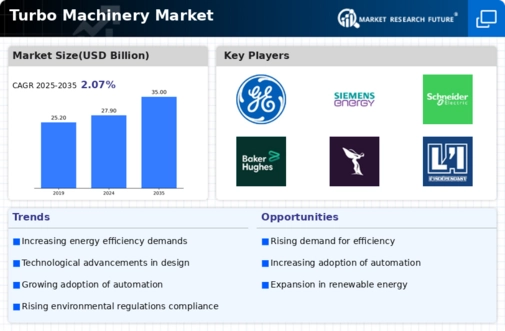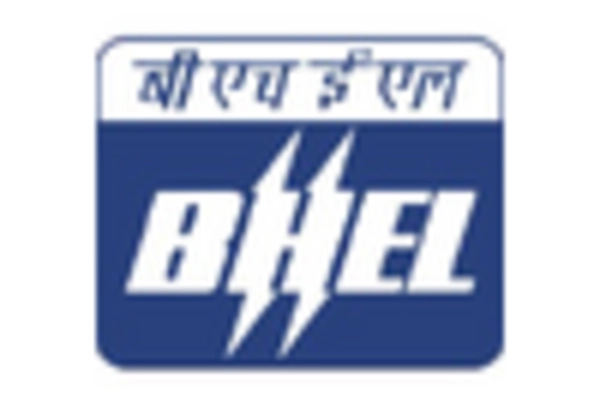Rising Demand for Energy Efficiency
The Turbo Machinery Market is experiencing a notable increase in demand for energy-efficient solutions. As industries strive to reduce operational costs and minimize environmental impact, the adoption of advanced turbo machinery technologies becomes imperative. According to recent data, energy-efficient turbo machinery can lead to a reduction in energy consumption by up to 30%. This trend is particularly evident in sectors such as power generation and oil and gas, where efficiency improvements can translate into substantial cost savings. Consequently, manufacturers are investing in research and development to enhance the performance and efficiency of their products, thereby driving growth in the Turbo Machinery Market.
Expansion of Renewable Energy Sources
The Turbo Machinery Market is significantly influenced by the expansion of renewable energy sources. As countries increasingly commit to sustainable energy goals, the demand for turbo machinery that supports wind, solar, and hydroelectric power generation is on the rise. For instance, the installation of wind turbines, which rely heavily on advanced turbo machinery, is projected to grow by over 20% in the next five years. This shift towards renewables not only fosters innovation within the Turbo Machinery Market but also encourages collaboration between manufacturers and energy providers to develop tailored solutions that meet the unique demands of renewable energy applications.
Technological Innovations in Turbo Machinery
Technological innovations are reshaping the Turbo Machinery Market, leading to enhanced performance and reliability. The integration of digital technologies, such as IoT and AI, into turbo machinery systems is enabling real-time monitoring and predictive maintenance, which can reduce downtime and improve operational efficiency. Recent studies indicate that companies adopting these technologies can achieve up to a 15% increase in productivity. Furthermore, advancements in materials and design are allowing for lighter, more efficient machinery, which is crucial for applications in aerospace and automotive sectors. As these innovations continue to evolve, they are likely to propel the Turbo Machinery Market forward.
Increasing Industrialization and Urbanization
The Turbo Machinery Market is poised for growth due to increasing industrialization and urbanization trends. As developing regions continue to industrialize, the demand for efficient machinery to support manufacturing processes is escalating. For example, the Asia-Pacific region is projected to witness a compound annual growth rate of over 5% in the turbo machinery sector, driven by rapid urban development and infrastructure projects. This surge in industrial activity necessitates the deployment of advanced turbo machinery to enhance productivity and meet the growing energy demands of urban centers. Consequently, manufacturers are focusing on expanding their production capabilities to cater to this burgeoning market.
Regulatory Support for Clean Energy Technologies
The Turbo Machinery Market is benefiting from regulatory support aimed at promoting clean energy technologies. Governments worldwide are implementing policies and incentives to encourage the adoption of cleaner, more efficient machinery. For instance, tax credits and subsidies for renewable energy projects are driving investments in turbo machinery that aligns with sustainability goals. This regulatory environment not only fosters innovation but also enhances the competitiveness of the Turbo Machinery Market. As regulations become more stringent regarding emissions and energy efficiency, manufacturers are compelled to innovate and adapt their offerings, thereby creating new opportunities for growth in the sector.


















Leave a Comment